Chakrasana: Health Benefits,Types,Variations and How to perform?
What is Chakrasana?
Wheel Pose — Chakrasana or Urdhva Dhanurasana — also known as Full-Wheel Pose and Upward Bow Pose, is a back-bending posture that opens up the chest, and tones the thighs, arms, and abdomen, and engages the whole body. As a heart-opening stretch, these pose aid release sadness and depression. It gets its name from the Sanskrit words, chakra, which represents wheel, and asana defines posture.
Also known as Urdva Dhanurasana, Chakrasana is a popular yoga motion practiced by many to improve spine flexibility while strengthening it. The ‘Wheel Pose’ or as most people like to name it, the Upward Facing Bow, The pose is a part of Ashtanga Yoga which is a yoga form that improves heart health, works as a stress buster, burns fat, and doubles as a cardio workout amongst other varied advantages. Introduced by Sri K. Pattabhi Jois in 1975, this style of yoga includes practicing Ashtanga poses at a quick and continuous pace.
Chakrasana or Urdhva Dhanurasana falls under Ashtanga Yoga which is a widely practiced form to improve the health of the body and mind. Apart from strengthening your mental and physical health, Chakrasana is said to line up the seven chakras of your body which are the Muladhara (the Root Chakra), located at the bottom of the spine, Svadhisthana (the Sacral Chakra), Manipura (the Navel Chakra), Anahata (the Heart Chakra), Vishuddha (the Throat Chakra), Ajna (the Third-Eye Chakra), and Sahasrara (the Crown Chakra).
Ancient cultures indicate that having these chakras aligned equals an even and healthy flow of energy that boosts the health of the body and mind. This asana involves flexing backward by arching your back into a bow and touching your palms to the floor. Chakrasana is known to increase flexibility and amp up muscle strength. It targets the wrists, spine, intercostal muscles, quadriceps, and hip flexors apart from activating your body’s energy.
Which muscles use in Chakrasana?
Chakrasana advantages the following muscles and hence can be involved in yoga sequences with the corresponding muscles focus:
- Lower Back muscles
- Biceps and Triceps
- Chest muscles
- Neck muscles
- Core (Abs) muscles
- Gluteus muscles
- Illio Psoas
- Quadriceps muscles
What are the Health Benefits of Chakrasana?
There are various benefits of doing the chakrasana pose:
- Spine Flexibility and strength – Apart from strengthening your spine, it lengthens your spinal cord and improves elasticity. It’s common knowledge that our skeletal frame begins to shrink with age, this asana aids in maintaining your posture and form.
- Tones the abdominal region – Daily practice ensure that the obliques and the abdominal fat are decreased.
- Opens up the chest – Improves lung capacity and assists oxygen circulating in the body easily.
- Stimulates the nervous system and endocrine system – Due to activation of the thyroid and pituitary glands, when engaged in the posture, happy hormones are secreted. It energizes and relieves your stress.
- This exercise stretches the core and the hip while improving hip flexibility.
- Increases cardiovascular health – As the chest is pushed out, cardiovascular health increases and the energy is activated.
- Strengthens the arms, wrist, shoulders, glutes, and thighs.
How to Perform Chakrasana?
To start, lie on your back.
Flex your knees, moving the soles of your feet onto your mat near the buttocks. Move down with your fingertips and make sure that you can just rub your heels. The feet should be aligned and the hips distance apart.
Flex your elbows and draw the palms of your hands overhead, setting them underneath your shoulders with the fingertips facing towards your feet.
Breathe in and press down into your palms and your feet as you raise your shoulders and hips up off the ground.
Do not press all the process up yet.
Draw the crown of your head to the mat, and ensure not to put extra weight on the neck. Use your hands and feet for grip. Pause here for a second as you make sure that your elbows are staying aligned and not spreading out to the sides.
Straighten your arms as you raise your head off the ground.
Make sure to maintain your feet parallel and knees in a row with your feet.
Move your chest towards the wall behind you.
Start to straighten your legs.
To return, tuck your chin into your chest and lower down gently.
Rest, letting the knees knock together.
Try to perform your backbends in sets of three. If it’s too much to perform three Wheels at first, you can mix in a Bridge or two.
Wheel Pose (Chakrasana) Video
What are the Types of Chakrasana?
There are some types of chakrasana :
- Ardha chakrasana/half wheel pose:
- Kati Chakrasana
Ardha Chakrasana/half wheel pose
What is Ardha chakrasana?
Ardha chakrasana yoga is also famous as the “half wheel pose“, and this asana is much easier than Chakrasana. A lot of people find it hard to practice full wheel pose or say Chakrasana, but half wheel pose is famous to be a much easier asana to practice every day.
According to the Sanskrit language, Ardha represents ‘half’, and chakra defines ‘wheel’. When you perform Ardha- chakrasana helps to gain a lot of health advantages. The reason this asana is called half-wheel posture or Ardha Chakrasana is that when you do this, your body takes the form of a half wheel.
It is important to do “Ardha Chakrasana” properly and follow each step to perform this asana correctly.
How to perform Standing Backward Bend (Ardha Chakrasana)?
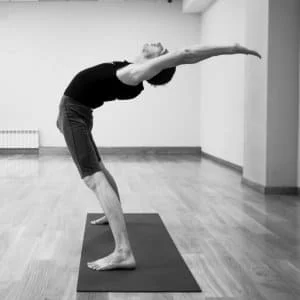
Stand straight with feet together and arms on either side of the body.
Balance same weight on both feet.
Inhale, stretch your arms overhead, palms facing each other.
Exhale, gently flex backward pushing the pelvis forward, keeping the arms in a row with the ears, elbows, and knees extended, head up, and raising your chest towards the roof.
Hold. inhale, come back up.
Exhale, bring your arms down, and relax.
Ardha Chakrasana Benefits:
- Ardha Chakrasana is extremely effective in decreasing thighs and stomach fat.
- This asana helps to increase your lungs capacity.
- This asana also assists to control high blood sugar levels and activating the pancreas.
- “Ardha Chakrasana” also helps to improve your back and spine muscles.
- This asana aids to tone your shoulders, things, and waist.
- This asana helps to reduce shoulder and neck pain.
- This asana is known to be one of the better exercises to get rid of back pain or lower back pain issue.
- Ardha Chakrasana yoga aids to cure respiratory disorders.
- This asana helps to activate abdominal organs.
- Ardha Chakrasana is really good to boost your heart health.
- Ardha Chakrasana yoga is an aid to reduce and relieve menstrual pain or disorder.
- This asana assists to stretch your abdomen, stomach, and intestine muscles.
Ardha Chakrasana Precautions:
- If you are pregnant it is essential to first consult your doctor and then do this asana.
- People who have a serious spine or hips problem or injury should not perform this asana.
- People with hernia and ulcer issues should not practice this asana.
- People who have high blood pressure shouldn’t do this asana.
- a person with an Abdominal injury or Neck injury shouldn’t do this asana.
- a person with a Dizziness problem also shouldn’t do this pose.
Kati Chakrasana
What is Kati Chakrasana?
“ArdhakatiChakrasana” is known as half waist wheel pose as well. The fold from the waist sideways in this asana resembles the wheel. The name of the Asana comes from the words Ardha, meaning half, Kati represents the waist, and Chakra, which means wheel. It is one of the most familiar Asanas that are used for general body toning on a regular basis”
How to do Kati Chakrasana ?
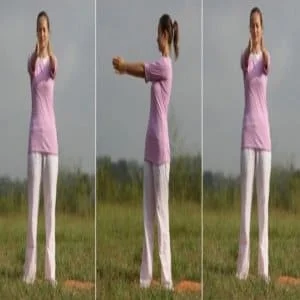
Stand up erect with your feet together
Keep your spine straight. maintain the shoulders straight.
Keep your legs apart from each other equivalent to the shoulders.
Extend your hands to the front, palms facing each other.
Your hands should be aligned with the shoulders.
First, breathe in, and then while exhaling twist from the waist to the left and look back over the left.
Keep exhalation and hold in this position as long as possible.
Inhale and slowly return to the center.
Exhale and twist from the waist to the right and look back over the right.
Exhale and pause in this final posture as long as possible.
Return to the center and relax.
This is the full cycle of this posture.
Performance can be repeated 10 to 20 times or even more than that as per the convenience.
Kati Chakrasana Benefits:
- Good for curing constipation.
- Strengthens and increases the flexibility of the spine and waist.
- Good for leg and arm muscles
- Opens up the shoulders and neck and strengthens the abdominal muscles and lower back.
- Boon for those with sedentary or deskbound jobs
- Helps to relieve lethargy.
- Improves the flexibility of the spine and waist.
- Aids to relieve back pain.
Contraindication of Kati Chakrasana:
- Any new spinal or abdominal surgery.
- Slipped disc.
- Pregnancy.
- Hernia.
- Chronic spinal disorders.
- Abdominal inflammation.
- Hernia.
What are the Modifications and Variations in Chakrasana?
There are a few ways to make Wheel Pose easier if it’s challenging for you.
- Wall modification
- Poses to progress to Wheel Pose
- A challenging variation of Chakrasana
Wall modification :
Modifications away from the wall
The most successful modifications are often performed against a wall with props, but if you’re bounded by what props you have access to, there are a few arrangements you can make without any, or with just one piece of equipment. The most accessible modification may be working on the preparation step of raising onto the crown of the head and not pressing your arms to extend.
You can also perform using a strap wrapped around both arms, just above your elbows, maintaining it shoulder-width apart. These assist keep the shoulders in correct alignment.
You can also use a strap at the upper part of the thighs, which can avoid lower back compression. When in the pose, check if you’re pressing out into the strap. Instead, work to loosen the strap by moving your inner thighs down toward the ground.
You can grab a block between your inner thighs. This also aids prevent lower back compression, but by targeting
the inner legs. Like the above modification, work to grab your block as you rise into the pose.
Wall modifications with multiple props
For tight shoulders:
Place two blocks up horizontally against the wall. It assists to tip them, so they’re angled and hooked against your baseboard for balance. If you do not have a connection to a wall with a baseboard, draw your mat up the wall slightly, like a tail.
Set a shoulder-wide strap around your upper arms and set it right at your elbow.
Lie in between the blocks, flex your knees, and take your arms overhead.
Turn your upper arms out, facing your fingers to the side of the room. This emphasizes the external rotation necessary in the upper arms and performs the chakrasana.
For a tight lower back:
Put two blocks on their face (low setting), with the short end against a wall. Put your feet on them like a pair of platform shoes.
Lie down with your toes pointing to the wall and your head toward the center of the room.
Flex your knees and step your feet onto the blocks.
Do the chakrasana pose.
Poses to progress to Wheel Pose :
- Bridge Pose (Setu Bandha Sarvangasana)
- Supported Fish Pose Variation (Matsyasana)
Bridge Pose (Setu Bandha Sarvangasana)
Bridge Pose is an essential first step in setting up for Wheel Pose. If you’re limited in reaching overhead for any reason, such as an injury or restricted immobility, placing your arms down by your sides can be a good alternative chest opener.
How to do :
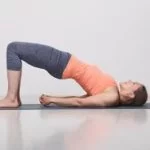
Take a supine position.
Flex your knees with your feet on the ground and split up your feet and legs hip-width apart.
As you inhale, raise your pelvis.
Move your upper arms underneath you, and either clasp your fingers or grasp the outer edges of your mat.
Hold for 8 breaths.
On an exhalation, come down slowly.
Supported Fish Pose Variation (Matsyasana)
Sometimes the question is not your flexibility, but your strength. Performing Supported Fish Pose on the blocks with your arms moving overhead is a good way to open the shoulders and chest, without it being a weight-bearing position.
How to do :
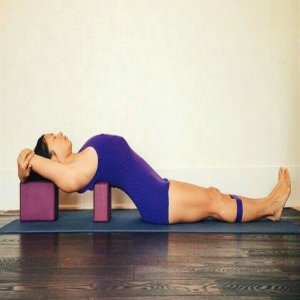
Place two blocks on the upper half of your mat. Generally, the block nearest to your feet is on the medium setting (sitting on one long side), and the upper block is on the highest setting (sitting on one short end, vertically).
Lie down with your scapulae directly on the first block and the back of your skull on the upper block.
Flex your knees and place your feet on the ground hip-width apart.
Align your legs and reach through them actively.
Draw your arms over your chest toward the roof and slowly start taking them toward the back of the room, in a row with your ears.
You can remain in the pose with your arms overhead, or draw your arms up and down dynamically.
After 10 breaths, down your arms by your sides.
Flex your knees and roll to one of your sides.
A challenging variation of chakrasana:
- Straight-Legged Wheel Pose
- One-Legged Wheel Pose
- One-Armed Wheel Pose
- Chest-To-Wall Pose
- Forearm Wheel Pose
Straight-Legged Wheel Pose
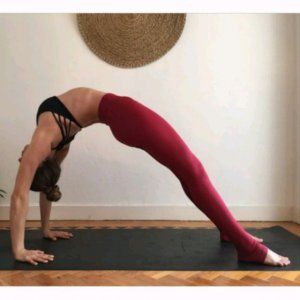
Not only is this variation very classy, but straightening the legs in Wheel also helps for a deeper stretch of the hip flexors while also giving stronger power to the legs.
How to do :
Set your body into a standard Wheel Pose and press down gently into your palms.
Expand your chest open as you begin to walk your feet slightly further away from your hands until you can completely extend the legs.
Keep a very active core and try to adjust your weight between your hands and your feet.
Eka Pada Urdhva Dhanurasana (One-Legged Wheel Pose)
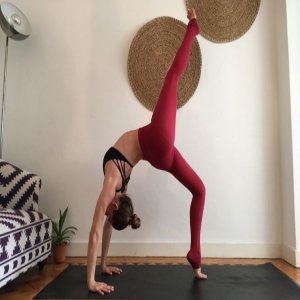
This challenging variation indicates strength and balance. By raising one leg off the ground, your arms, core, and other legs have to work overtime, forming deeper strength.
How to do :
Set yourself into a standard Wheel Pose.
Try to move your feet slightly near toward your hands (as much as it still feels cozy in your lower back).
You can keep your heels placed on the ground or raise your heels and balance on the balls of your feet (this may give you some extra space for motion).
Keep your feet aligned and your legs around hip distance apart.
Press down firmly into your right leg and both hands as you draw your left foot up off the ground.
First, flex your knee deeply and move it in toward your chest.
Stimulate your core to stabilize your balance and, once you feel steady, you can work toward extending and straightening your left leg up toward the sky.
Stay for a few deep breaths before switching to the opposite side.
Eka Hasta Urdhva Dhanurasana (One-Armed Wheel Pose)
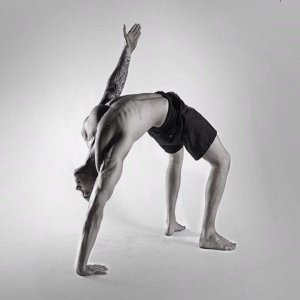
This variation is a very good arm strengthener as you’re basically balancing upside down with only one arm on the floor holding you up.
How to do :
Begin in a typical Wheel Pose and gradually transfer your weight into your right hand.
Press the ground firmly away from you and try to normalize the weight in both of your legs.
Activate your core, and when you feel stable, rise up onto the fingers of your left hand and then work to raise that hand up off the ground.
Pause for a few deep breaths before releasing down and working all the same actions on the other side.
Chest-to-Wall
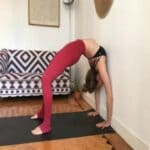
How to do :
Place your body for your typical Wheel Pose with a wall behind your hands.
Press up into full Wheel and begin to walk yourself back until your hands touch the wall.
Press your chest backward toward the wall, expanding and opening through your heart center.
Dwi Pada Viparita Dandasana (Forearm Wheel)
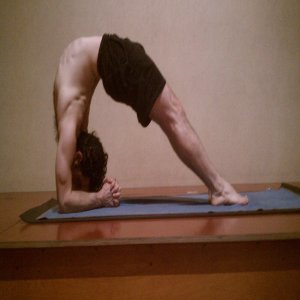
Although technically this one’s a different yoga position, Dwi Pada Viparita Dandasana or Two-Legged Inverted Staff a pose is a modern form of the Wheel. Forming a deeper opening in the chest and shoulders, this posture challenges your flexibility and allows for a tender stretch.
How to do :
Come into full Wheel. Keeping strong legs and core, very gently release the crown of your head to rest on the mat.
From here, let go of one forearm and then the other to the ground.
Clasp your fingers or form a prayer position with your hands and actively press the ground away with your forearms to again raise your head off the mat.
Expand the heart toward the back of your mat and feel the stretch from your shoulders through your armpits, chest, and throughout your anterior body.
You can either walk your feet out to extend the legs or walk your feet in nearer to your hands (maybe even raising one leg and moving your foot toward your hand, if you’re super bendy, to catch a grasp of the foot).
What are the Precautions and Contraindications for the Chakrasana?
There are some contraindications and precautions you need to take care of during Chakrasana :
- Avoid this asana if you have a high BP condition.
- If you suffer from wrist issues like tendonitis or shoulder issues we suggested avoiding this one as it puts quite a bit of pressure on your wrist.
- If you’re recovering from broken bones, slipped disc, torn ligaments, neck injury, or any physical problem avoid this yoga pose.
- Avoid this pose if have lower back pain, carpal tunnel syndrome, shoulder injuries, or instability, like a history of dislocation.
- Make sure that deep backbends, or any poses with extra spinal extension, are commonly contraindicated after the second trimester of pregnancy, or once you start showing, as it may contribute to diastasis recti.
- If you have heart problems, then avoid them.
- Do not perform if you have a headache or Diarrhoea.
- Avoid if you have a hernia.
What are the dos and don’ts for Chakrasana?
DO’S:
- Keep the breathing rhythmic and slow.
- Keep the scapulae and neck region relaxed and comfortable.
- Keep the facial muscles relaxed and soft.
- Keep the arms and knees extended.
- Keep some distance between the feet for better balance and support while in the pose.
- Respect and find embrace with the body, by not pushing yourself into the position.
DON’TS:
- Exert extra force, which may cause excessive strain onto the arms while raising the body up into the position.
- Force yourself into gaining the arch in the spine.
- Strain and tense up the body while coming into the pose and/or while performing the pose.
What are the Common Mistakes to avoid while Chakrasana?
Avoid these mistakes so you get the most out of this pose without strain or injury.
Hyperextending Lower Back
Contracting your butt muscles (gluteus maximus) too strongly can tilt your pelvis up and this can flatten your spine and hyperextend the lower back. Only firm your glutes, do not exaggerate it.
Spreading Knees and Feet
If you splay your knees and feet it will flatten your lower back. If you have trouble with the legs separating and the feet turning out, try pressing a block between your thighs to help you maintain the legs parallel.

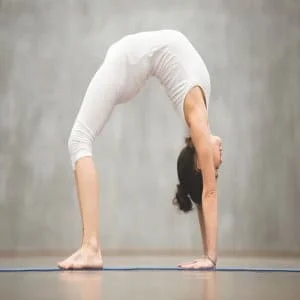
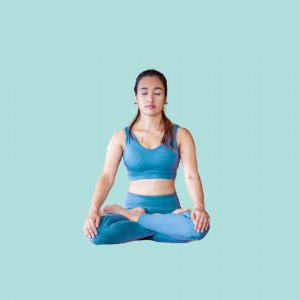
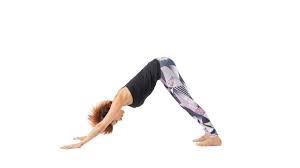

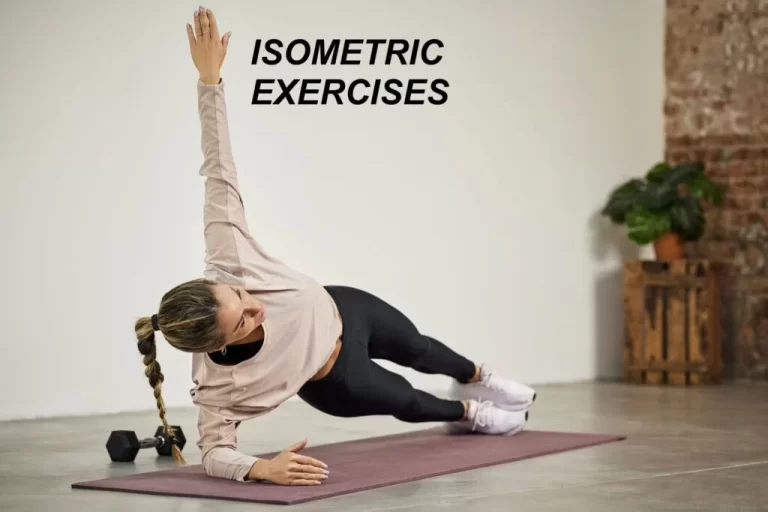
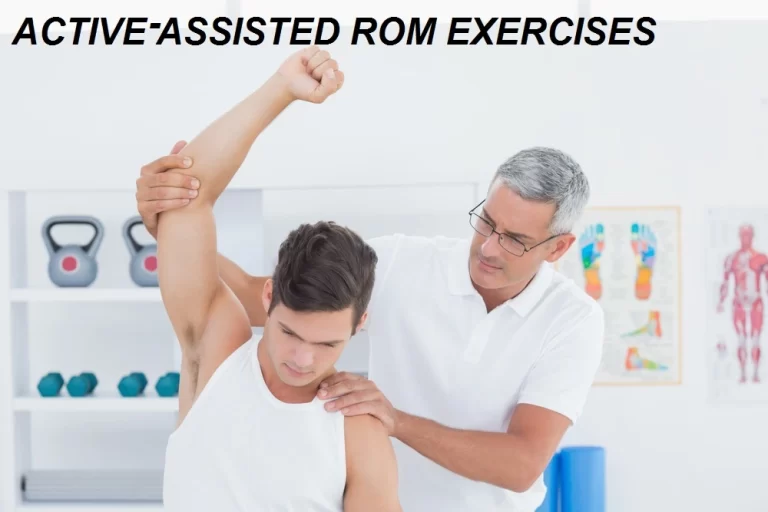
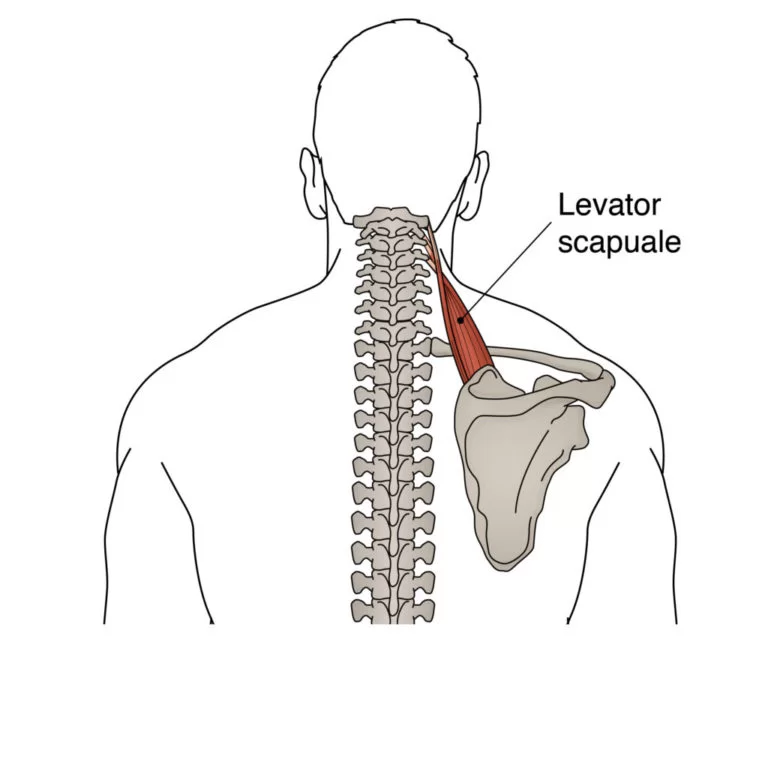
One Comment